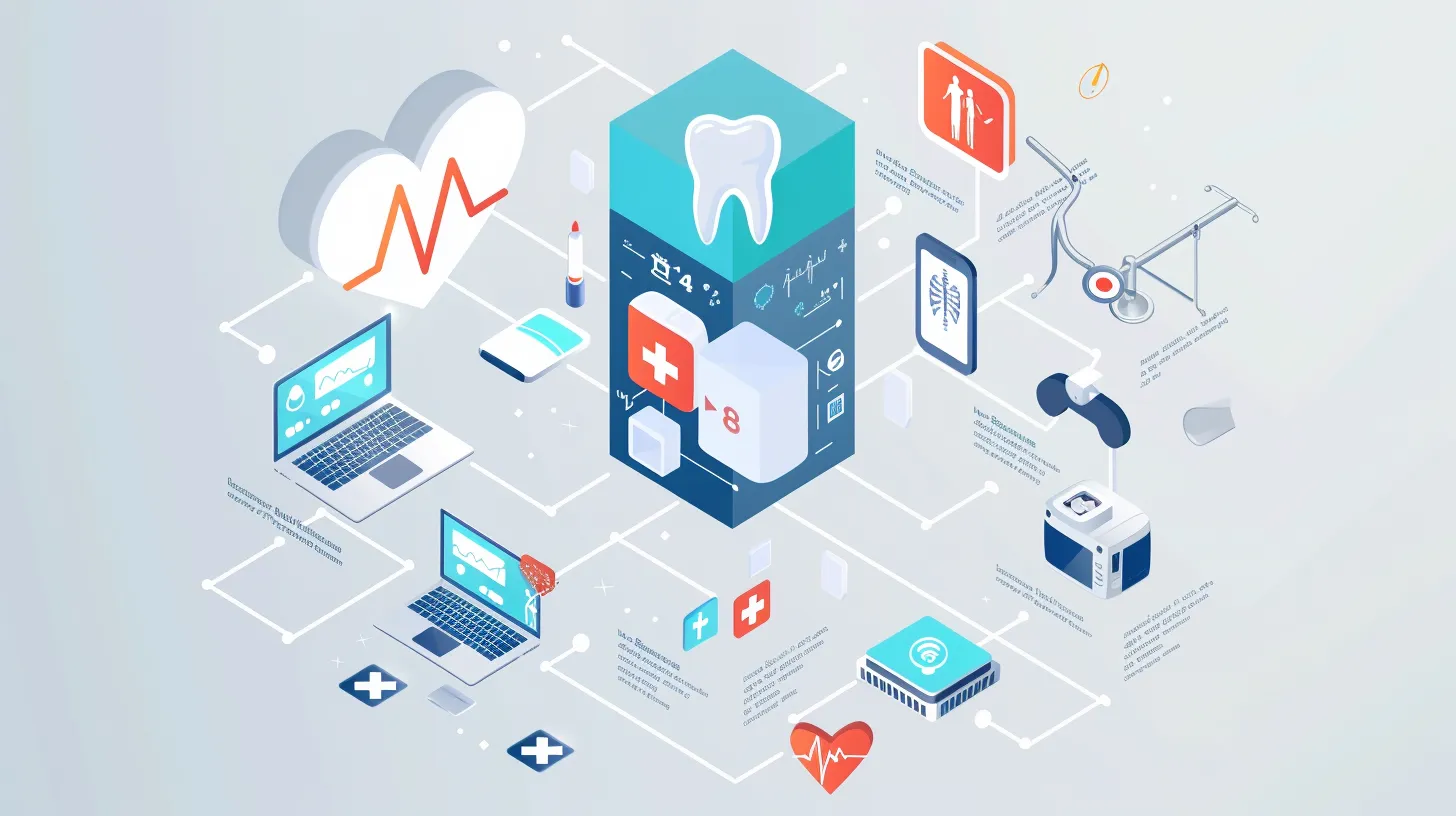Types of Health Insurance Plans Explained Easily
Understanding the various types of health insurance plans is essential for making informed choices. This article explores individual and family health insurance, employer-sponsored plans, and government health programs. Readers will learn the key features and benefits of each plan, simplifying their decision-making process. Addressing common concerns such as fee structures and the role of health savings accounts, this guide aims to clarify the complexities of managed care options and medical coverage.
Overview of Health Insurance Plans

Health insurance plans come in various types, each designed to meet different needs and preferences.
- Health Maintenance Organization (HMO) emphasizes preventive care and often requires policyholders to choose a primary care physician. This structure not only streamlines patient care but can also lead to cost savings by focusing on preventive medicine.
- Preferred Provider Organization (PPO), which offers more flexibility by allowing individuals to see any physician, including specialists, without a referral. While this flexibility can lead to higher expenses, PPO plans provide greater access to a wide network of healthcare providers, making them an attractive choice for those who value choice in their healthcare decisions.
- Health Savings Accounts (HSAs). This approach allows for lower monthly premiums while providing policyholders the option to save for future medical expenses. This setup not only encourages smarter spending on healthcare but also provides tax advantages, making it a financially sound choice for many families.
Health insurance plans offer a path to security and peace of mind. Now, let us turn our attention to Individual and Family Health Insurance Plans, where personal needs shape one’s choices.
Individual and Family Health Insurance Plans

Defining individual health insurance options involves understanding the various plans available to single policyholders. Many health insurance plans provide tailored coverage that accommodates specific needs, allowing patients to select options based on their health requirements and financial situations. For instance, some individuals may benefit from a TRICARE plan, especially if they’re veterans or military family members, as it offers comprehensive coverage with lower out-of-pocket costs.
Family health insurance plans provide essential coverage for all members of the household, addressing various medical needs under one policy. These plans often integrate benefits associated with the Affordable Care Act, ensuring access to preventive services and necessary prescriptions, including drug coverage. Families may also explore programs like Medicaid, which can offer additional support for those meeting specific income criteria, or consider genetic testing services covered by some plans to address hereditary health concerns more effectively.
Choosing between Individual Health Insurance and family coverage involves weighing distinct benefits that can significantly impact health care costs and overall well-being. Individual plans may allow for more tailored care, as they focus on specific health needs and provide greater flexibility in selecting coverage options, while family plans often offer enhanced financial protection by spreading the cost across multiple members, which can lead to lower overall expenses for medication and other health care services. Understanding these benefits helps individuals and families make informed decisions that best meet their unique healthcare requirements and budget. For more detailed insights, one might consider looking into what to look for in individual health insurance plans.
Employer-Sponsored Health Insurance Plans

Group health insurance provides essential coverage options for employees through their employers. It is typically offered by employers to provide employees with comprehensive coverage options under one plan. These plans often cover a range of healthcare services, including preventive care, hospitalization, and prescription drugs, which can ease the financial burden on employees and their families. Additionally, employer contributions can significantly reduce the overall cost of premiums, making group plans an attractive option for individuals seeking affordable health insurance solutions.
Benefits and Limitations
Employer-sponsored health insurance plans typically fall into several categories, including Health Maintenance Organizations (HMOs), Preferred Provider Organizations (PPOs), and Exclusive Provider Organizations (EPOs). HMOs often emphasize preventive care and require members to choose a primary care physician, while PPOs allow more freedom in selecting healthcare providers without referrals but may come with higher premiums. EPOs, on the other hand, offer a middle ground by providing a network of providers without requiring referrals, making them a flexible option for employees who value choice yet still want to keep costs manageable.
Employer-sponsored health insurance plans offer several benefits, including reduced monthly premiums due to employer contributions, making coverage more affordable for employees. Additionally, these plans often provide comprehensive access to various healthcare services, crucial for maintaining overall health and well-being. However, there are drawbacks to consider, such as limited choices of healthcare providers within the network and potential struggles with coverage if an employee decides to switch jobs, which can lead to gaps in coverage during transitions.
Employer contributions significantly influence the costs associated with employer-sponsored health insurance plans. By covering a portion of the premiums, employers reduce the financial burden on employees, making access to essential healthcare services more affordable. This support not only encourages employee enrollment in health plans but also fosters a healthier workforce overall, generating long-term benefits for both employees and employers.
Government Health Insurance Programs

Government health insurance programs provide crucial coverage options for various populations. Medicaid offers assistance to low-income individuals, detailing qualifications and benefits. Medicare, designed for seniors and certain individuals with disabilities, includes essential coverage and eligibility information. The Children’s Health Insurance Program (CHIP) extends healthcare to children in low-income families. Lastly, the Affordable Care Act introduced significant reforms, alongside regional variations in these government programs, ensuring accessible healthcare for diverse communities.
Overview of Medicaid: Who Qualifies?
Medicaid is a critical government health insurance program designed to provide coverage for low-income individuals and families. Eligibility primarily hinges on income, household size, and specific circumstances such as disability or pregnancy. Additionally, states have the authority to expand Medicaid, resulting in varying qualifications across regions. Potential applicants must verify their eligibility based on local guidelines.
Medicare Explained: Coverage and Eligibility
Medicare is a government health insurance program that provides crucial coverage for seniors aged 65 and older, as well as certain younger individuals with disabilities. This program comprises different parts: Part A covers hospital stays, Part B addresses outpatient services, and Part D offers prescription drug coverage. Understanding eligibility for Medicare is essential; individuals typically qualify based on age or specific health conditions, ensuring they receive necessary healthcare services and support during critical periods in their lives.
The Children’s Health Insurance Program (CHIP)
The Children’s Health Insurance Program (CHIP) provides essential healthcare coverage for children in low-income families, ensuring they have access to necessary medical services. This program covers a range of healthcare needs, including routine check-ups, immunizations, and dental services, which are crucial for children’s overall health and development. Families can benefit from CHIP as it accommodates various income levels and is often less expensive than private insurance options, helping to alleviate financial burdens while promoting the well-being of children.
The Affordable Care Act: Essential Features
The Affordable Care Act (ACA) brings essential changes to health insurance, focusing on improving access and affordability. This legislation mandates that insurance plans cover essential health benefits, including preventive services, without cost-sharing, thereby encouraging preventive care for individuals. Additionally, the ACA has established health insurance marketplaces where individuals can compare plans, ensuring they find options that fit their specific healthcare needs and budget constraints.
Short-Term and Catastrophic Health Insurance Plans

Short-term health insurance plans offer temporary coverage with specific characteristics, including limited duration and often lower monthly premiums. Catastrophic coverage becomes essential in emergencies or for high-cost situations. This section will outline the limitations of these plans, coverage gaps, cost comparisons with other types of insurance, and ideal scenarios for utilizing short-term options.
Characteristics of Short-Term Plans
Short-term health insurance plans are designed to provide temporary coverage for individuals who need immediate protection against unexpected medical costs. Typically lasting from a few months to up to a year, these plans often feature lower premiums compared to traditional health insurance. However, it is important to note that short-term plans may not cover pre-existing conditions and often come with limitations on essential benefits, making them suitable mainly for those in between longer-term insurance options or in need of basic, immediate coverage.
When to Consider Catastrophic Coverage
Individuals may consider catastrophic coverage when they seek an affordable option to protect themselves against high medical costs resulting from serious accidents or illnesses. This type of insurance is beneficial for healthy individuals who do not frequently require medical care but want peace of mind knowing they are covered in emergencies. For example, younger adults or those in transition between jobs often find catastrophic plans appealing, as they provide essential coverage without the higher premiums associated with comprehensive health plans.
Limitations and Coverage Gaps
Short-term and catastrophic health insurance plans often have significant limitations and coverage gaps that potential policyholders should consider. For instance, short-term plans typically do not cover pre-existing conditions, which leaves individuals vulnerable if unexpected health issues arise. Additionally, catastrophic coverage usually has high deductibles, meaning that while it offers a safety net during emergencies, individuals may still face substantial out-of-pocket costs before the insurance kicks in, making it less suitable for those requiring regular medical care.
Special Health Insurance Plans

Special health insurance plans provide important coverage options that extend beyond standard medical services. Topics include understanding dental and vision insurance options, which enhance overall health, and disability insurance that safeguards income in unforeseen situations. Additionally, travel health insurance offers protection while abroad, critical illness insurance addresses severe health events, and Health Savings Accounts (HSAs) and Flexible Spending Accounts (FSAs) provide tax advantages for healthcare expenses.
Understanding Dental and Vision Insurance Options
Understanding dental and vision insurance options is essential for maintaining overall health and well-being. These specialized plans provide coverage for routine check-ups, preventive care, and necessary treatments that are not typically included in standard health insurance policies. For example, dental insurance often covers services like cleanings and fillings, while vision insurance may help with eye exams and glasses, effectively addressing common health needs.
Disability Insurance: Protecting Your Income
Disability insurance plays a crucial role in protecting an individual’s income when unforeseen health issues arise, preventing financial strain during challenging times. This type of insurance provides a portion of the policyholder’s salary if they become unable to work due to illness or injury, allowing them to maintain their standard of living. By having a disability plan in place, individuals can safeguard their financial future, ensuring they can cover essential expenses while focusing on recovery.
Travel Health Insurance: Coverage When Abroad
Travel health insurance offers essential coverage for individuals traveling abroad, protecting them from unexpected medical expenses that may arise during their journeys. This specialized plan typically covers emergency medical care, hospital visits, and sometimes even trip cancellations, which can provide peace of mind when away from home. For travelers, securing travel health insurance is a smart choice to ensure that they have financial protection and access to necessary healthcare services while exploring new destinations.
Critical Illness Insurance: What You Need to Know
Critical illness insurance is a specific type of health coverage that provides financial support when a policyholder is diagnosed with a severe medical condition such as cancer, heart attack, or stroke. This form of insurance typically pays a lump sum that can be used for various expenses, including medical bills, ongoing treatment, or even daily living costs, while the individual focuses on recovery. By understanding critical illness insurance, individuals can make informed decisions that safeguard their financial health during challenging times, ensuring they are prepared for unexpected medical events.
Health Savings Accounts (HSAs) and Flexible Spending Accounts (FSAs)
Health Savings Accounts (HSAs) and Flexible Spending Accounts (FSAs) are valuable tools that enhance healthcare financial management for individuals and families. HSAs allow for tax-deductible contributions, which can be utilized for qualified medical expenses, promoting long-term savings for healthcare needs. Conversely, FSAs enable employees to set aside pre-tax dollars for healthcare costs incurred within a plan year, providing immediate tax benefits and greater control over out-of-pocket expenses.
Choosing a special plan is just the beginning. Now, it is time to explore smart ways to find the right coverage that truly fits one’s needs. This comparison of individual health insurance plans could be an excellent start for those looking into individual health insurance options.
Conclusion
Understanding the various types of health insurance plans is essential for individuals and families navigating their healthcare needs. Each plan, whether HMO, PPO, or others, offers distinct benefits catering to different preferences and circumstances. Individuals can make informed decisions that protect their health and finances by evaluating personal health requirements and cost factors. To learn more about some strategies in choosing the right insurance plans, Simpson Benefits will clarify health insurance options that empower policyholders to select coverage that aligns with unique situations and offers peace of mind in their healthcare journey.
